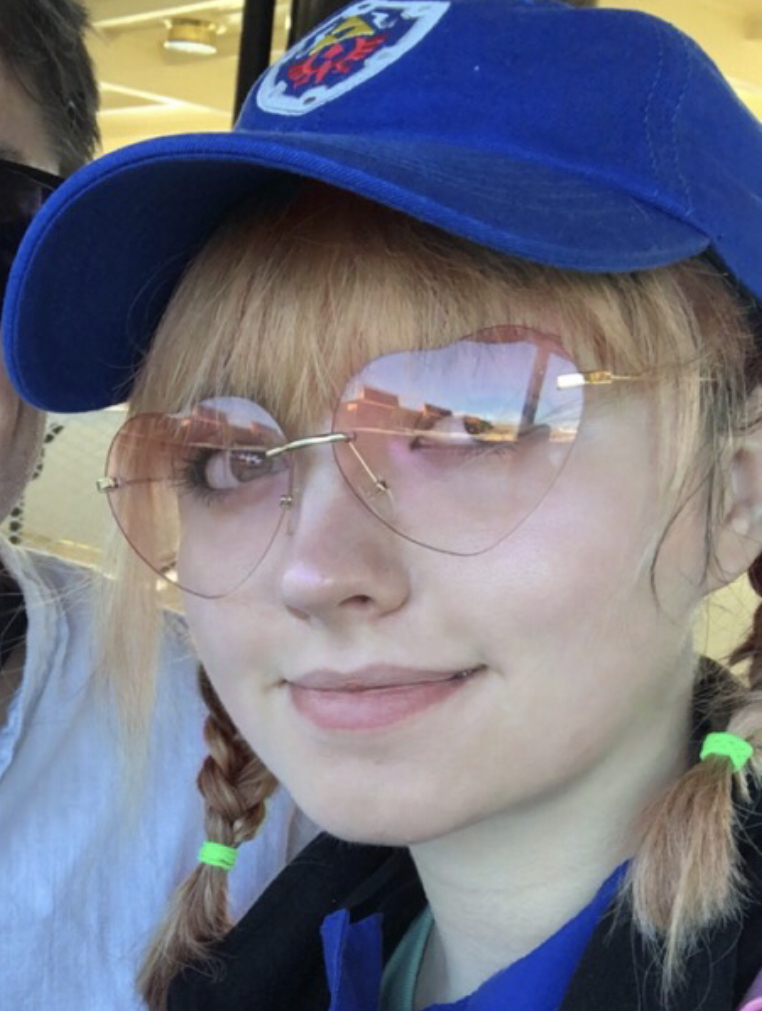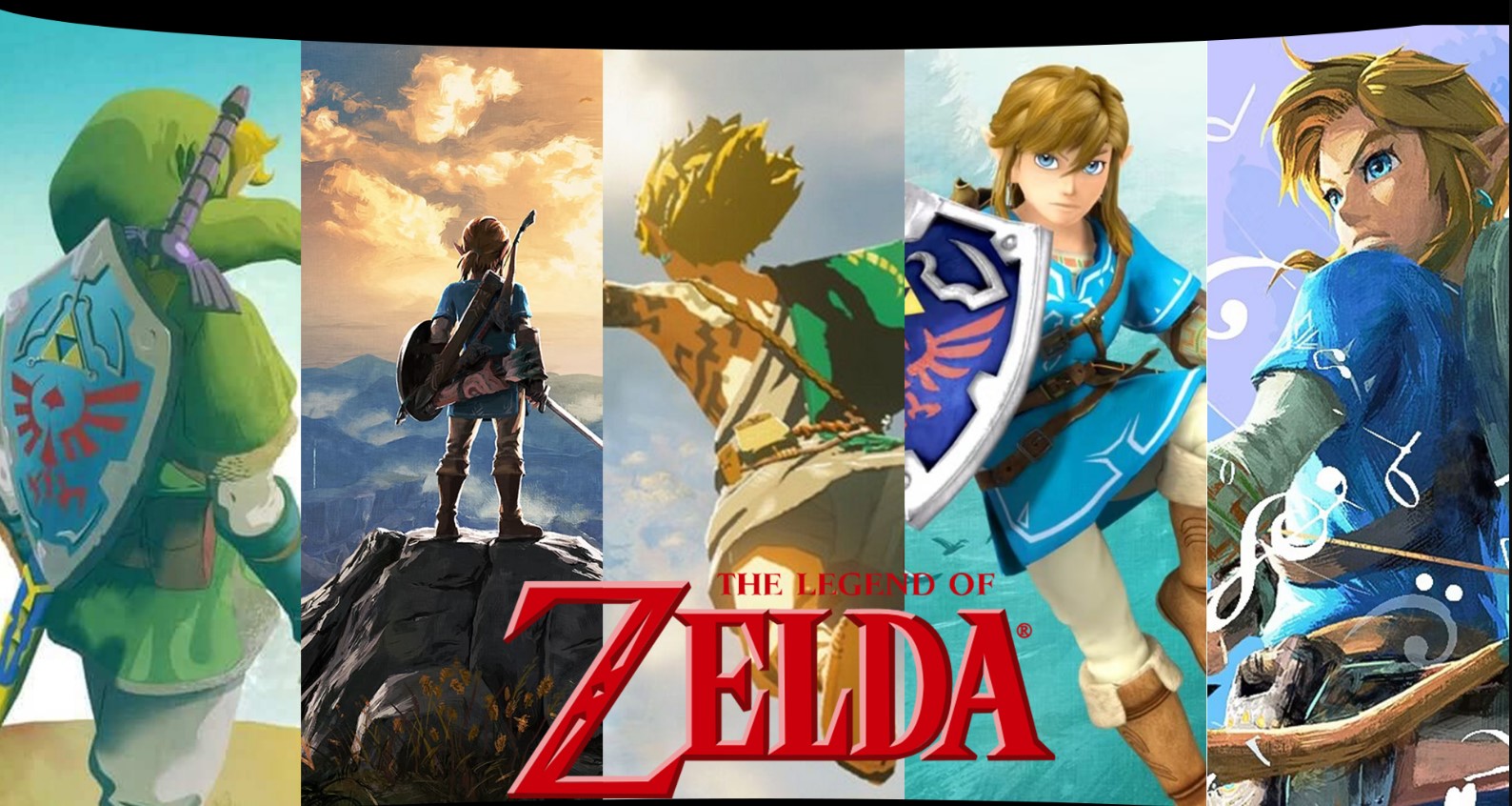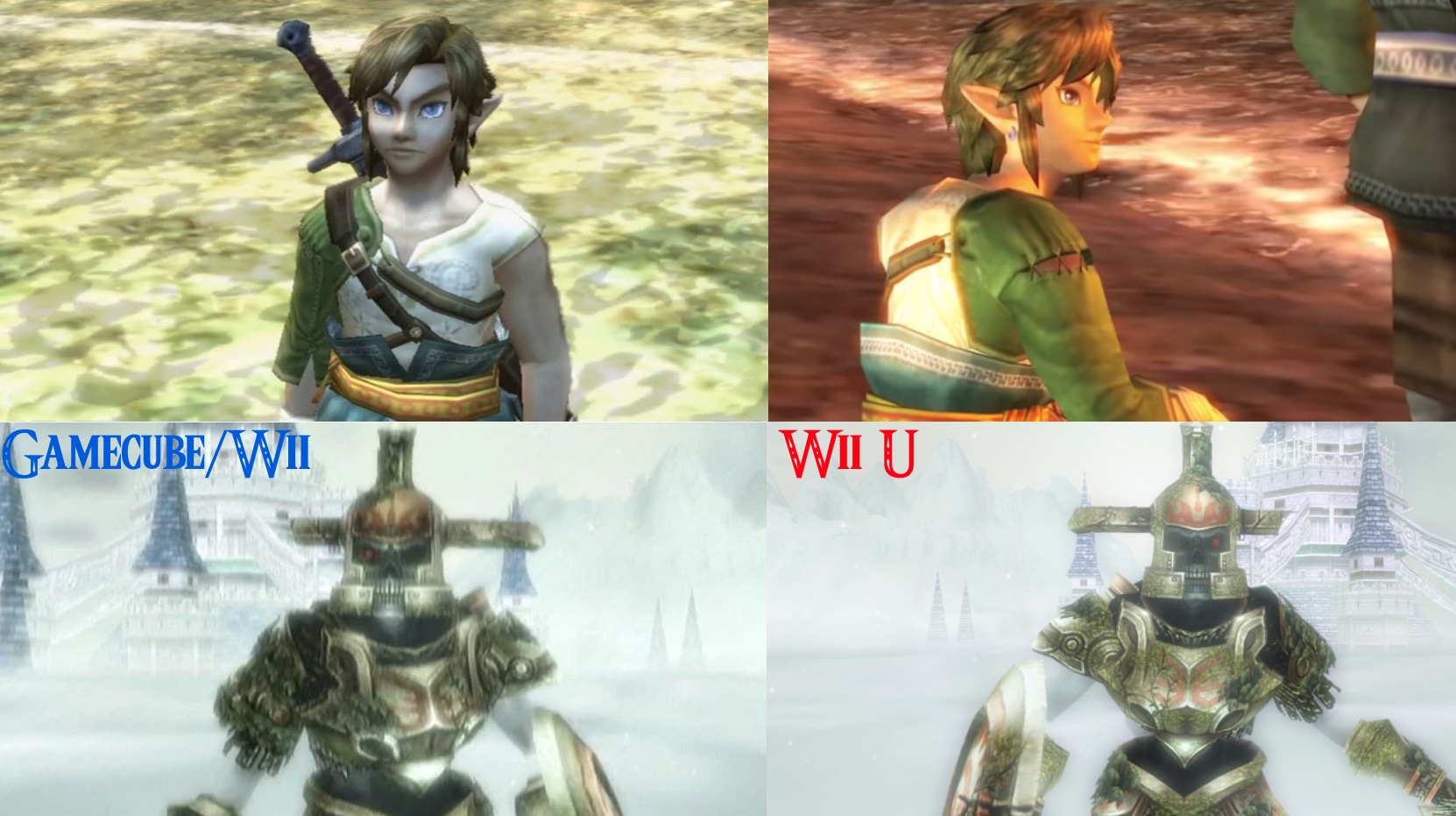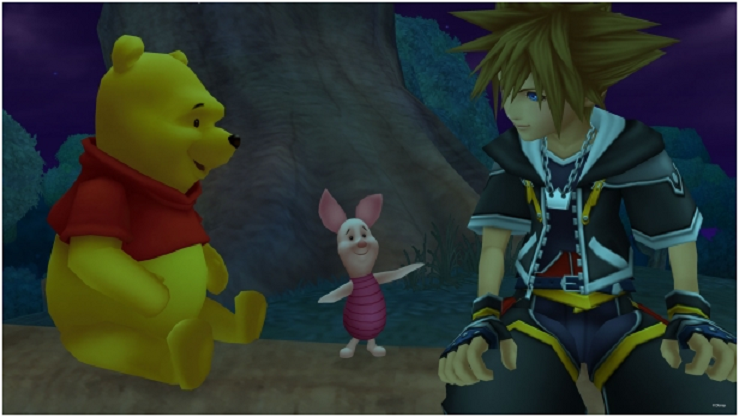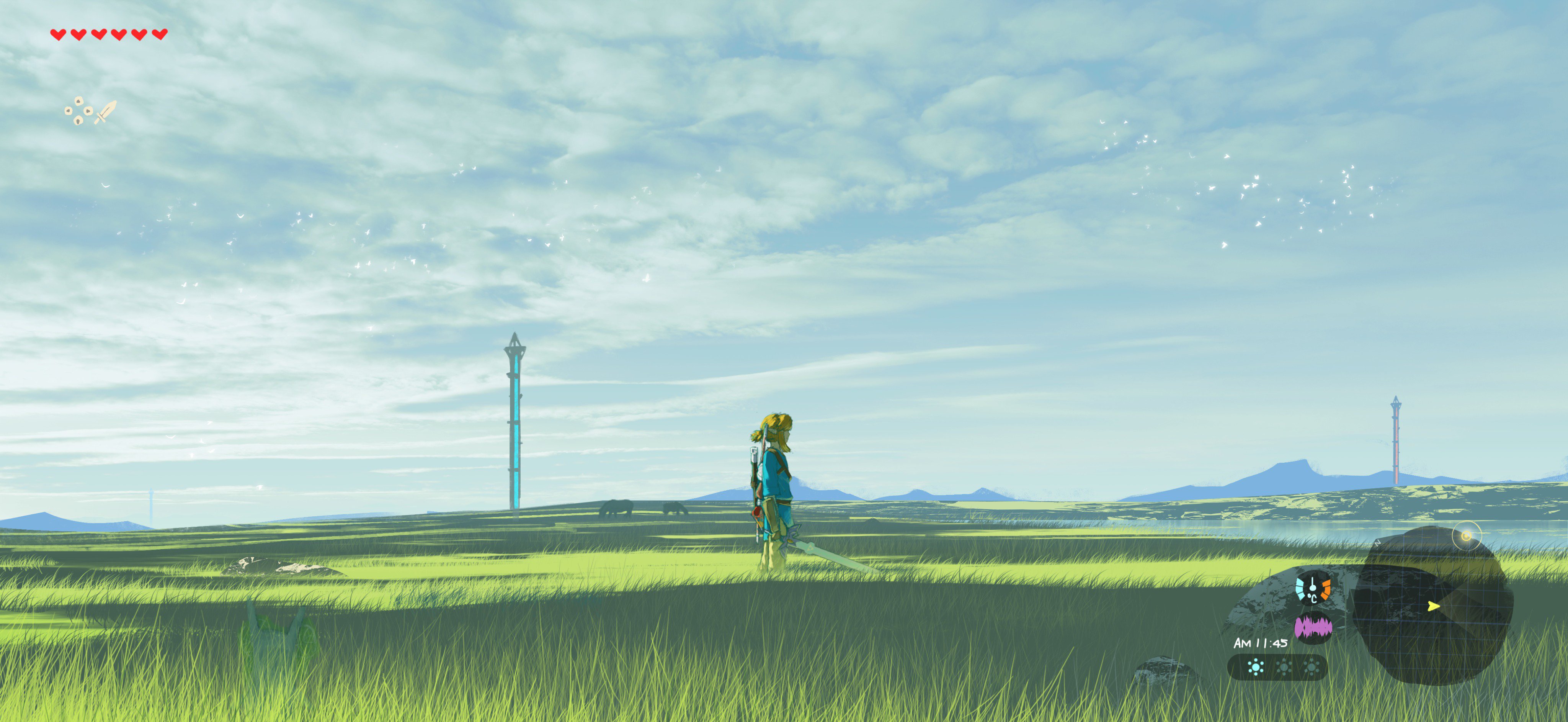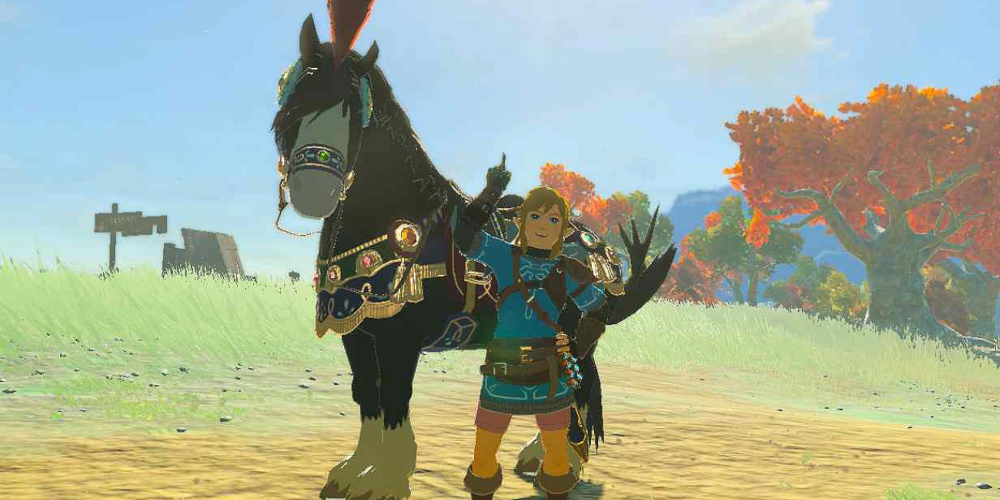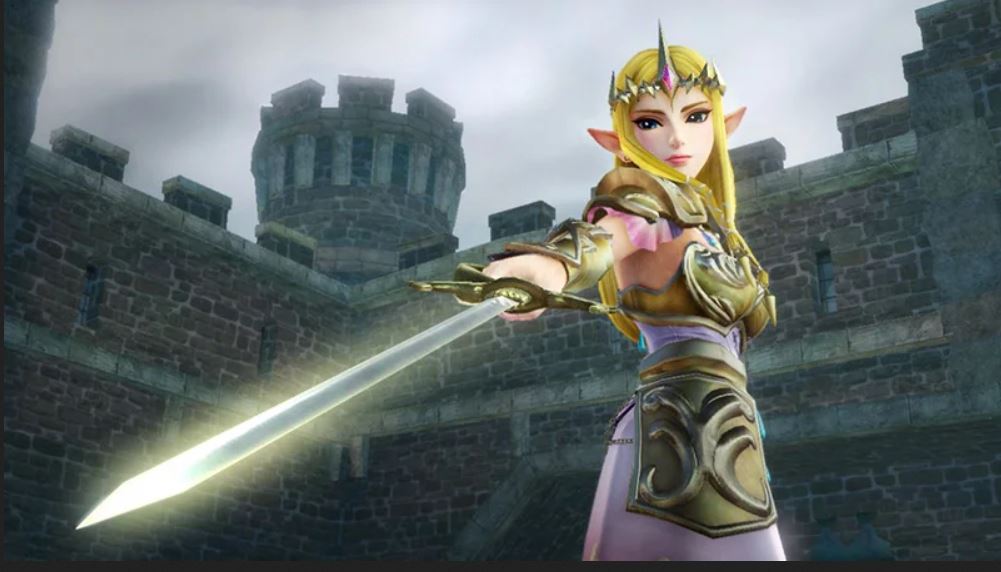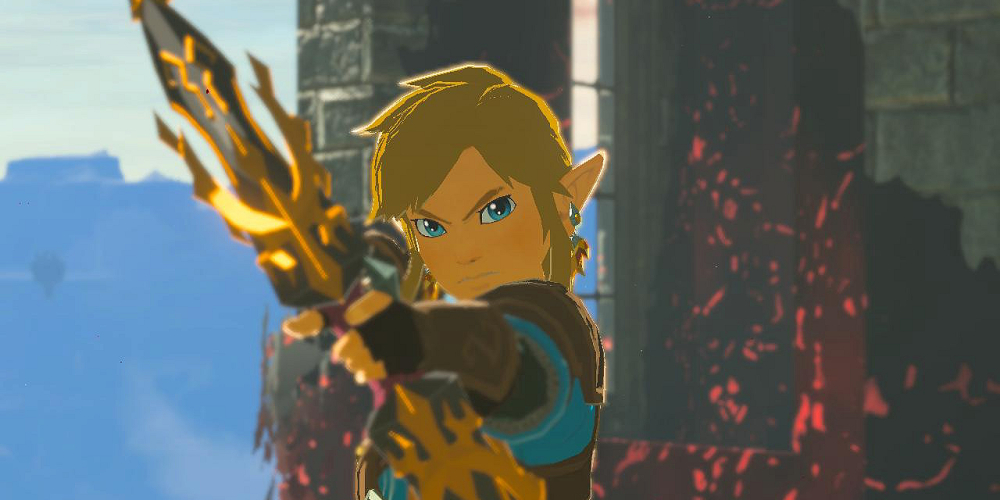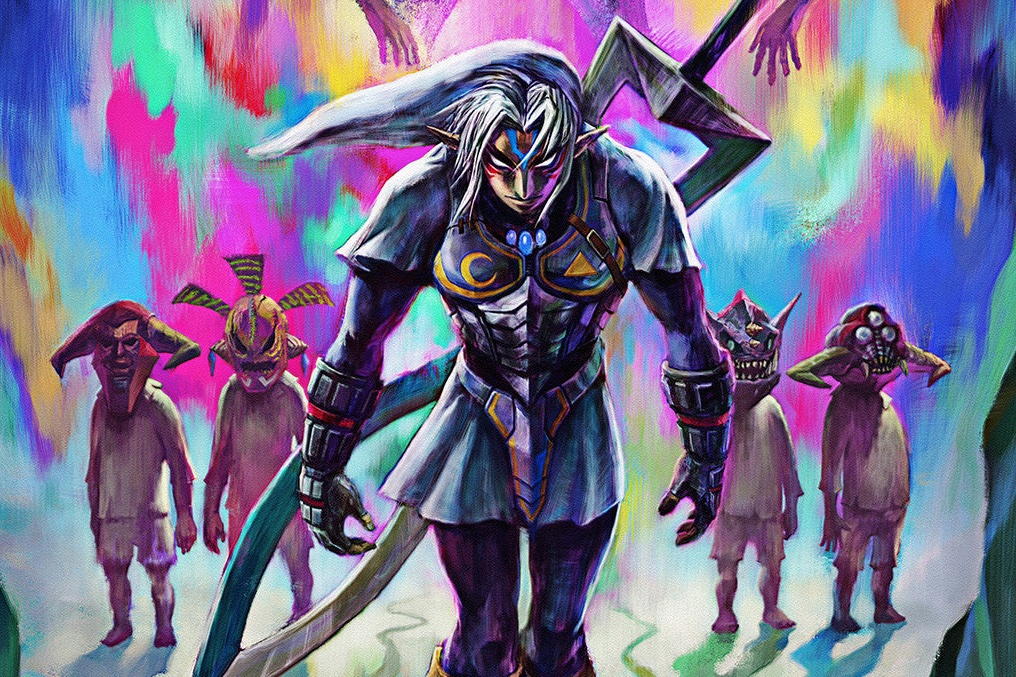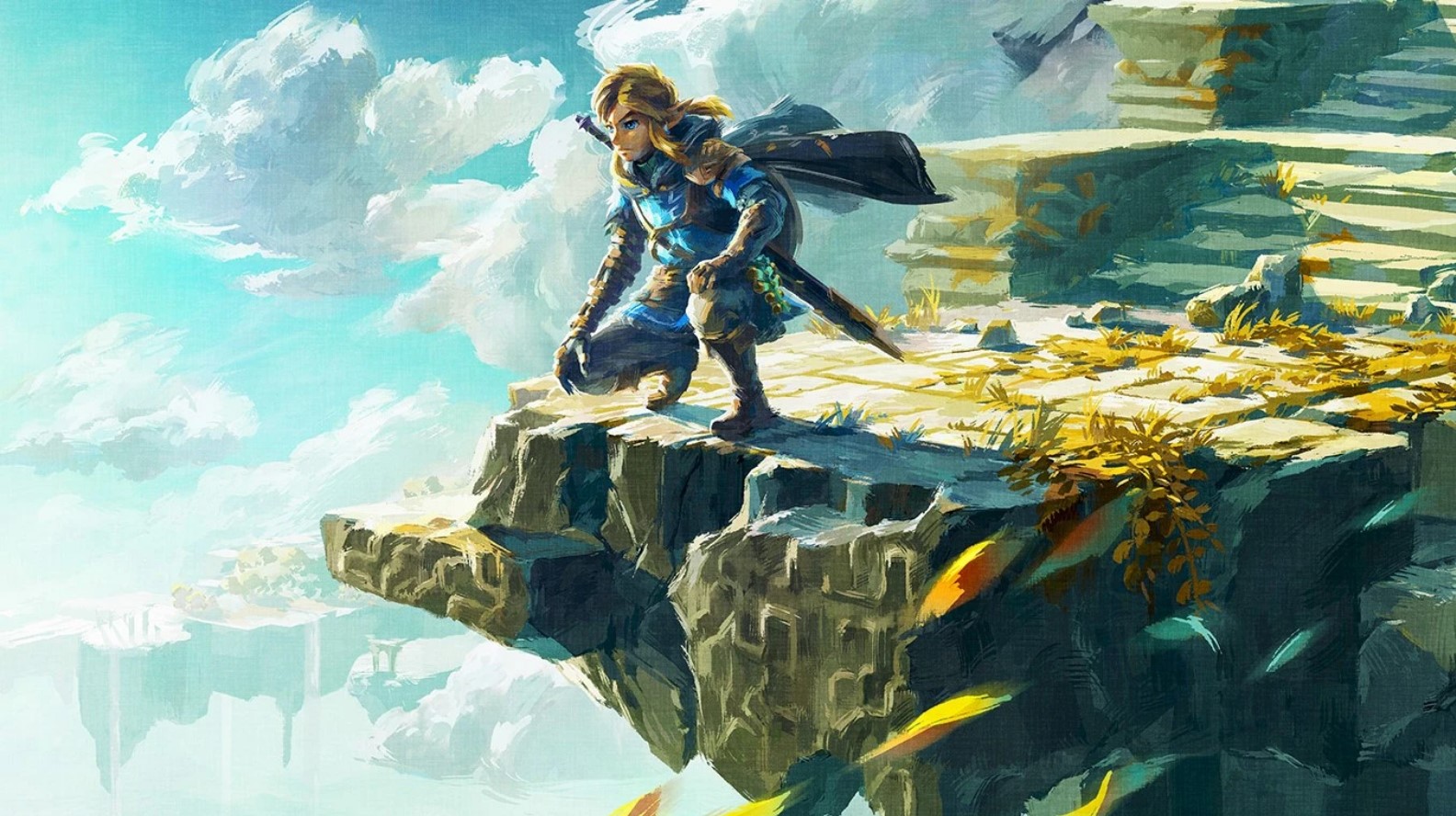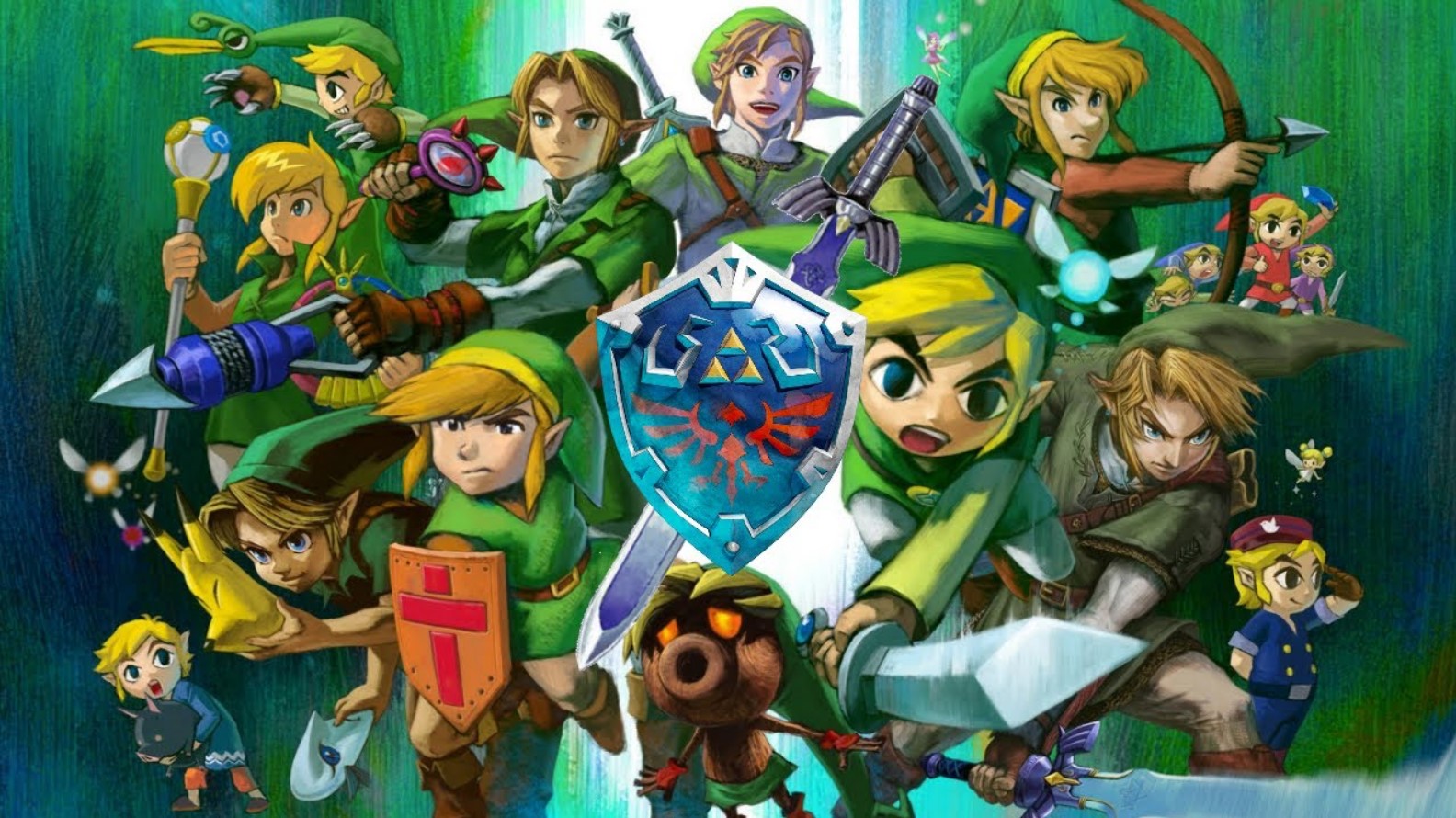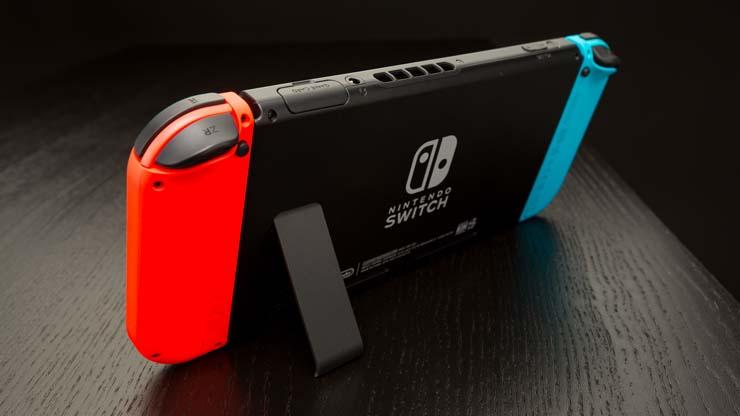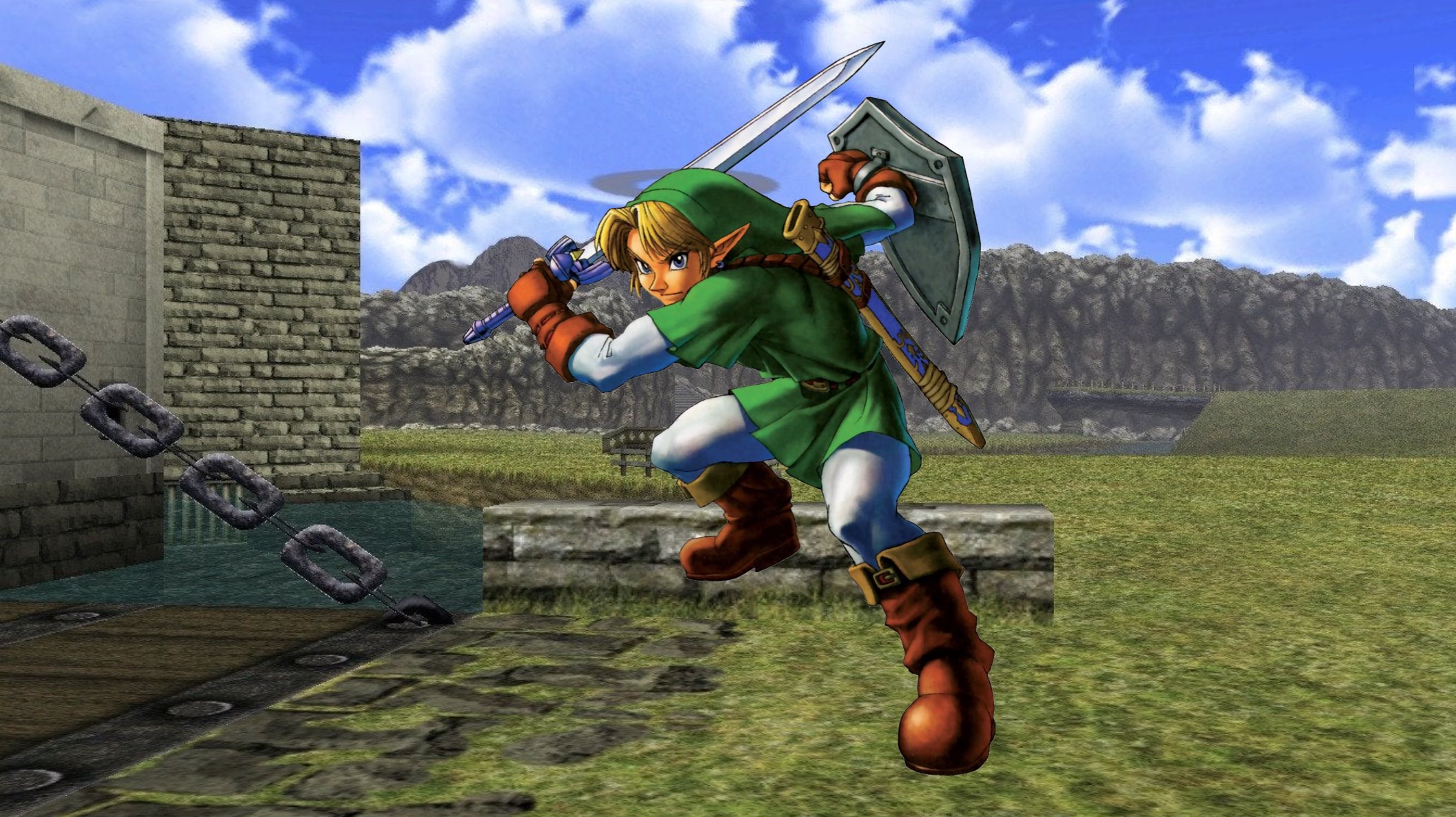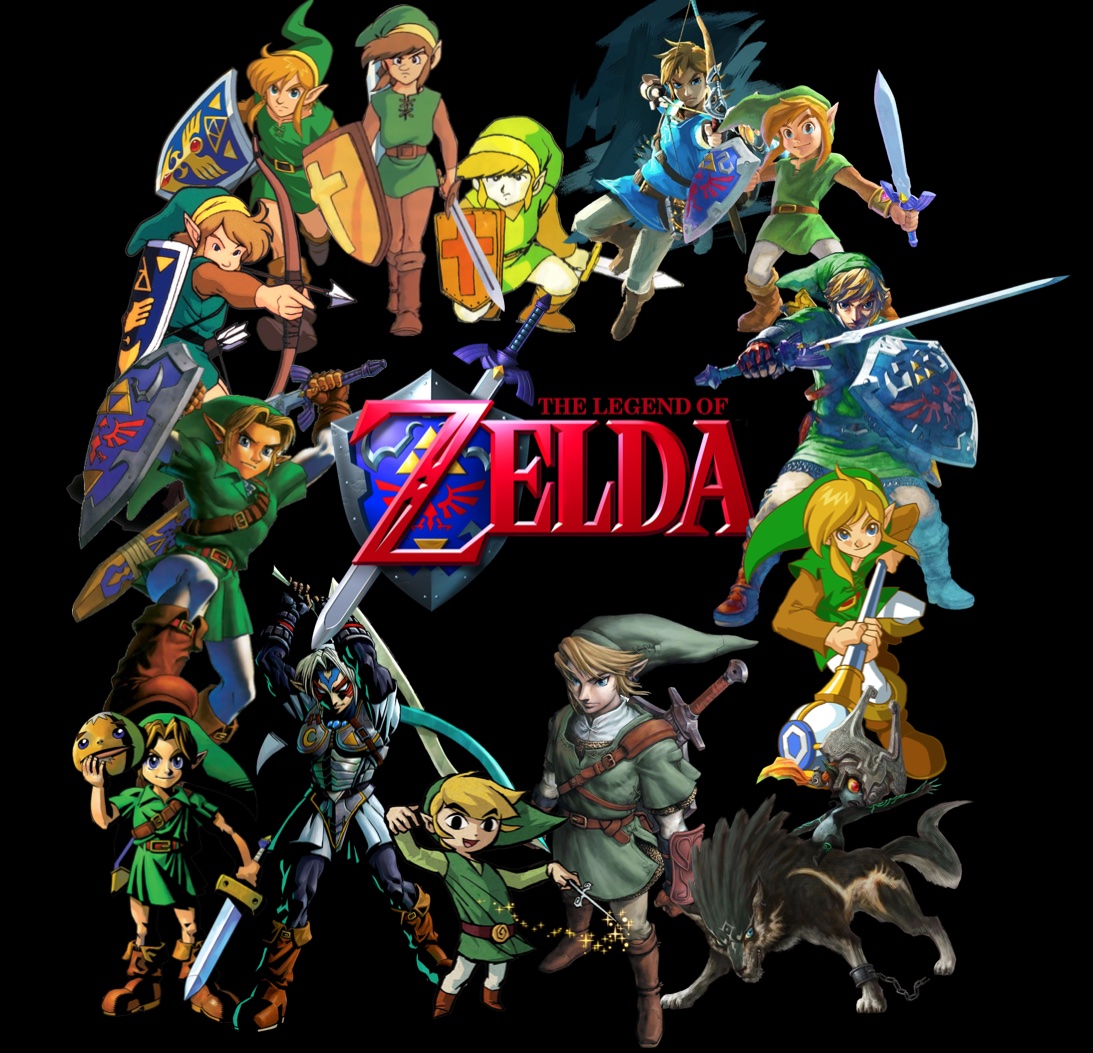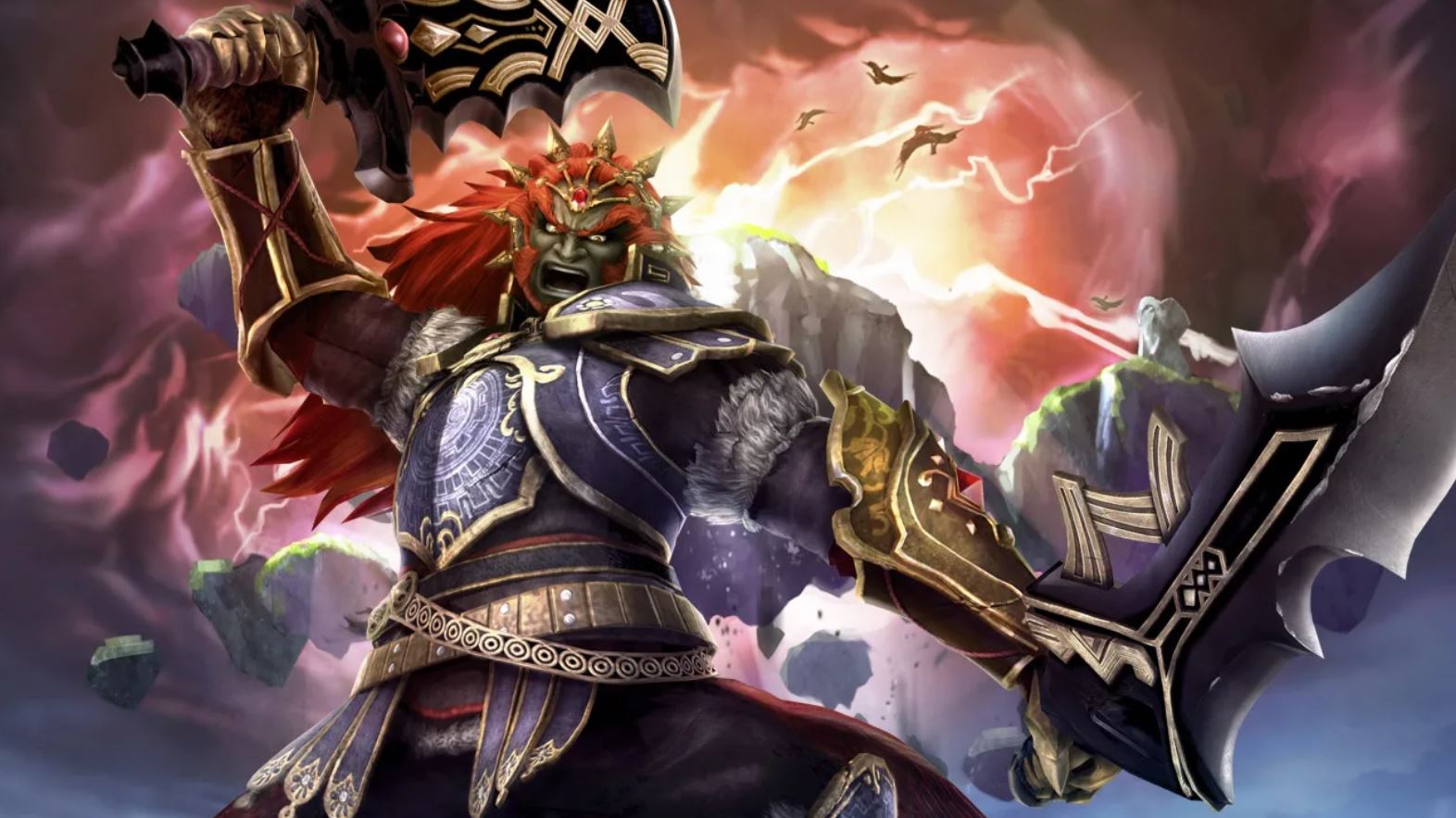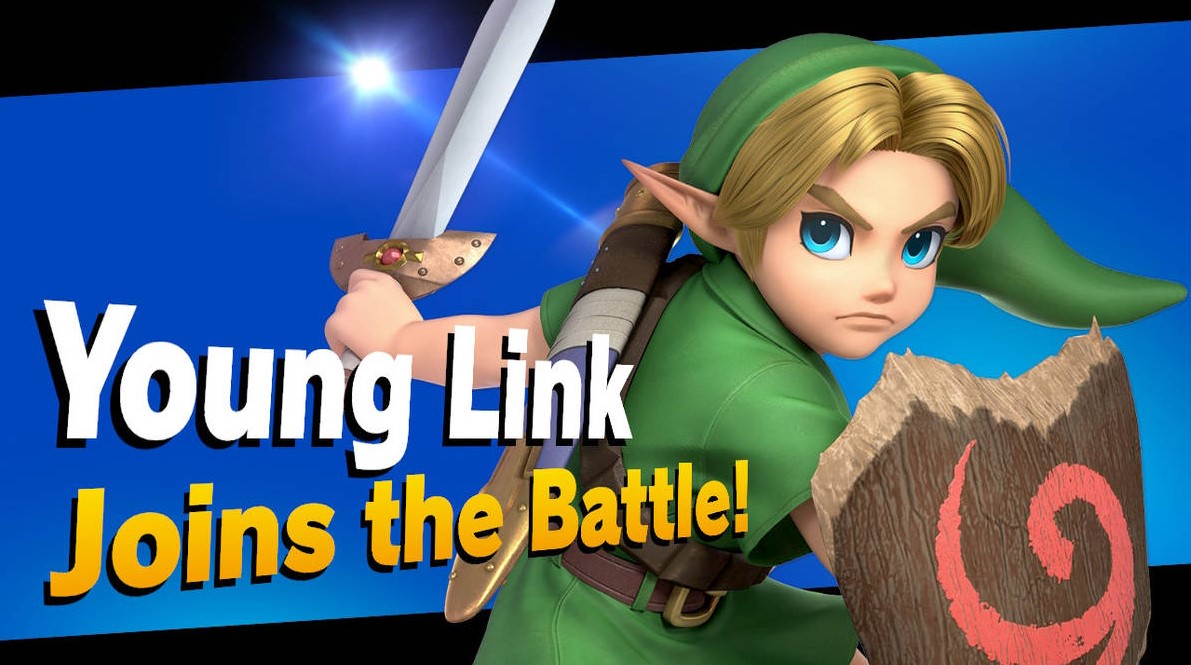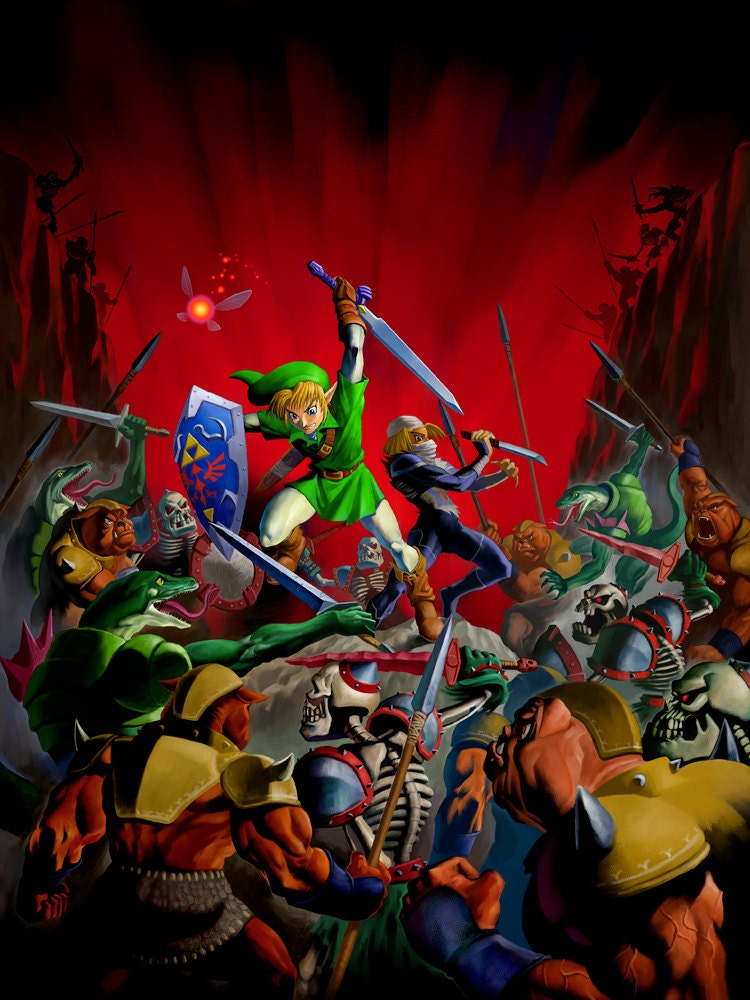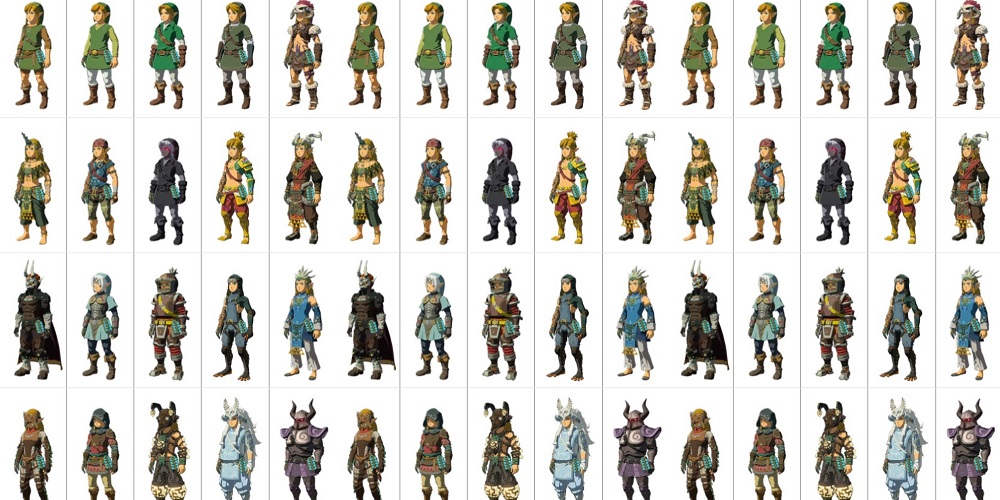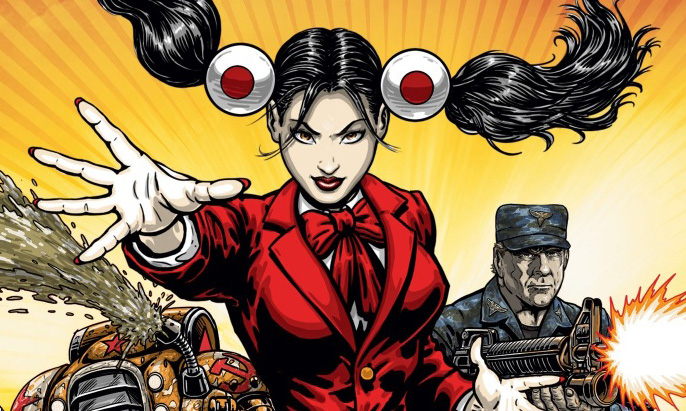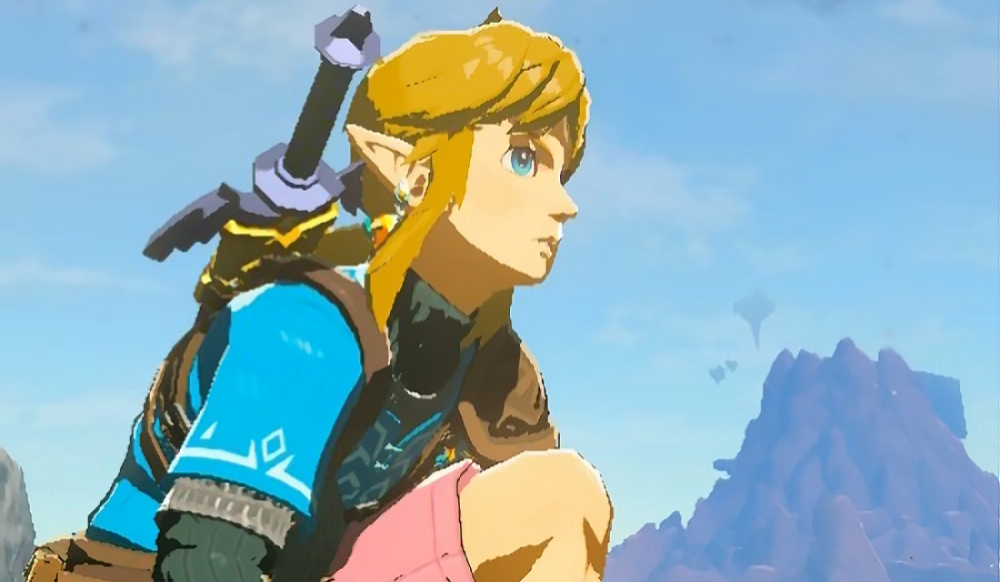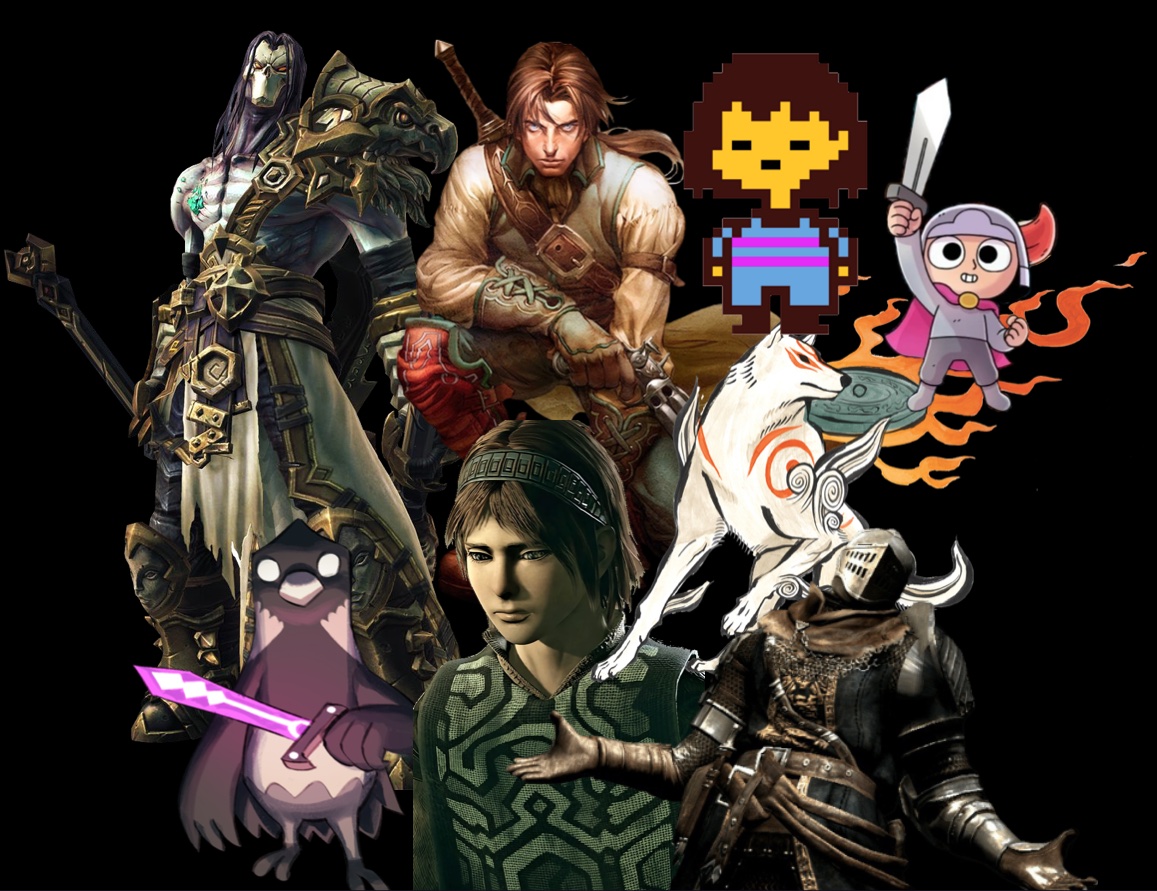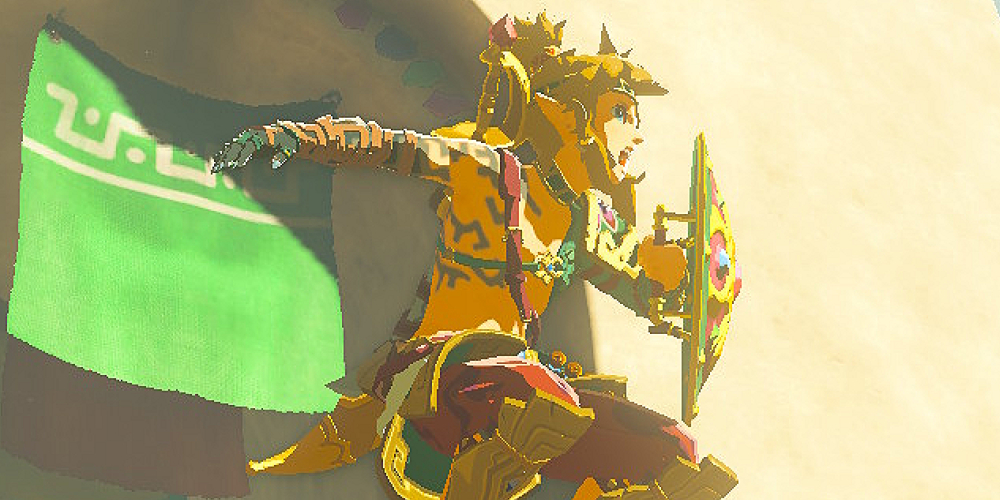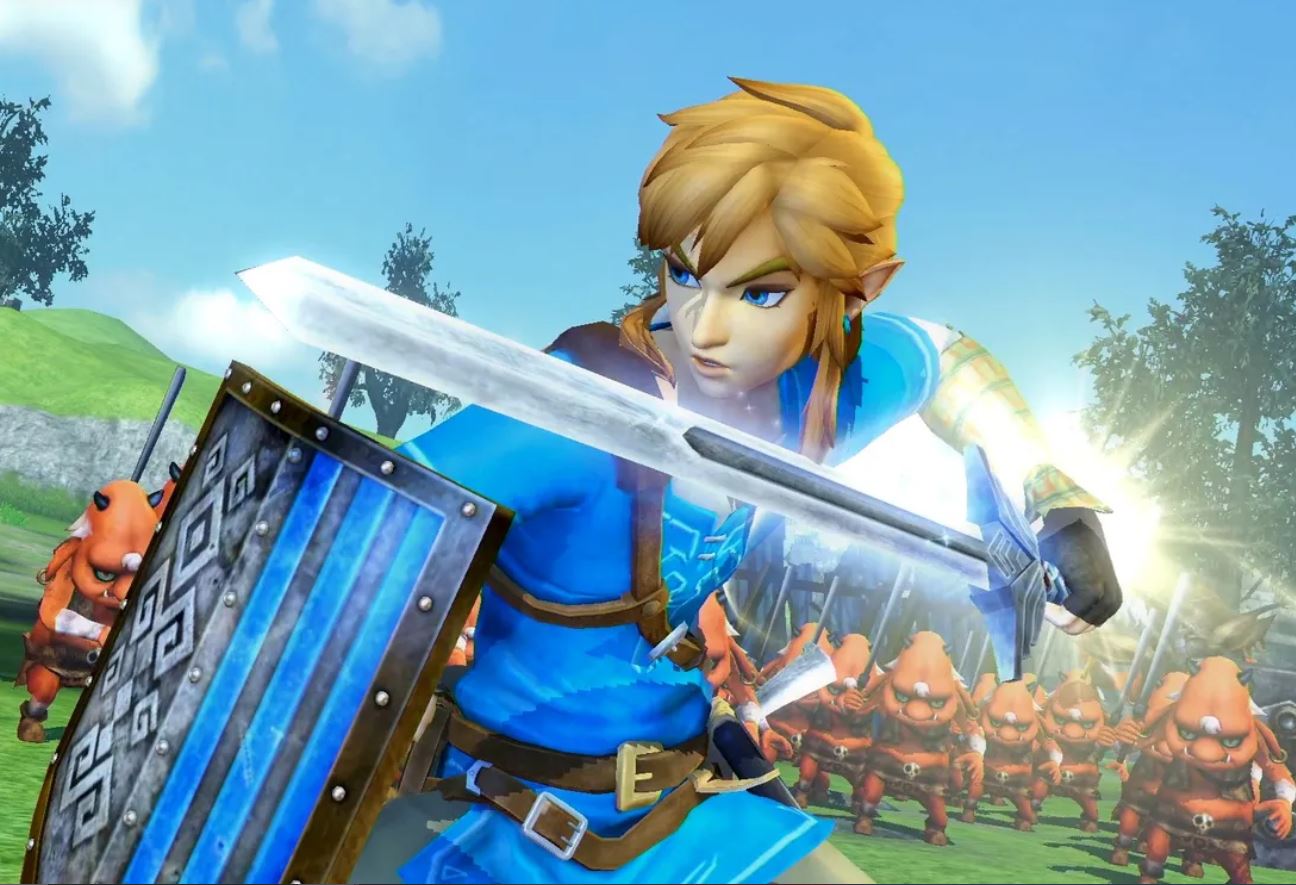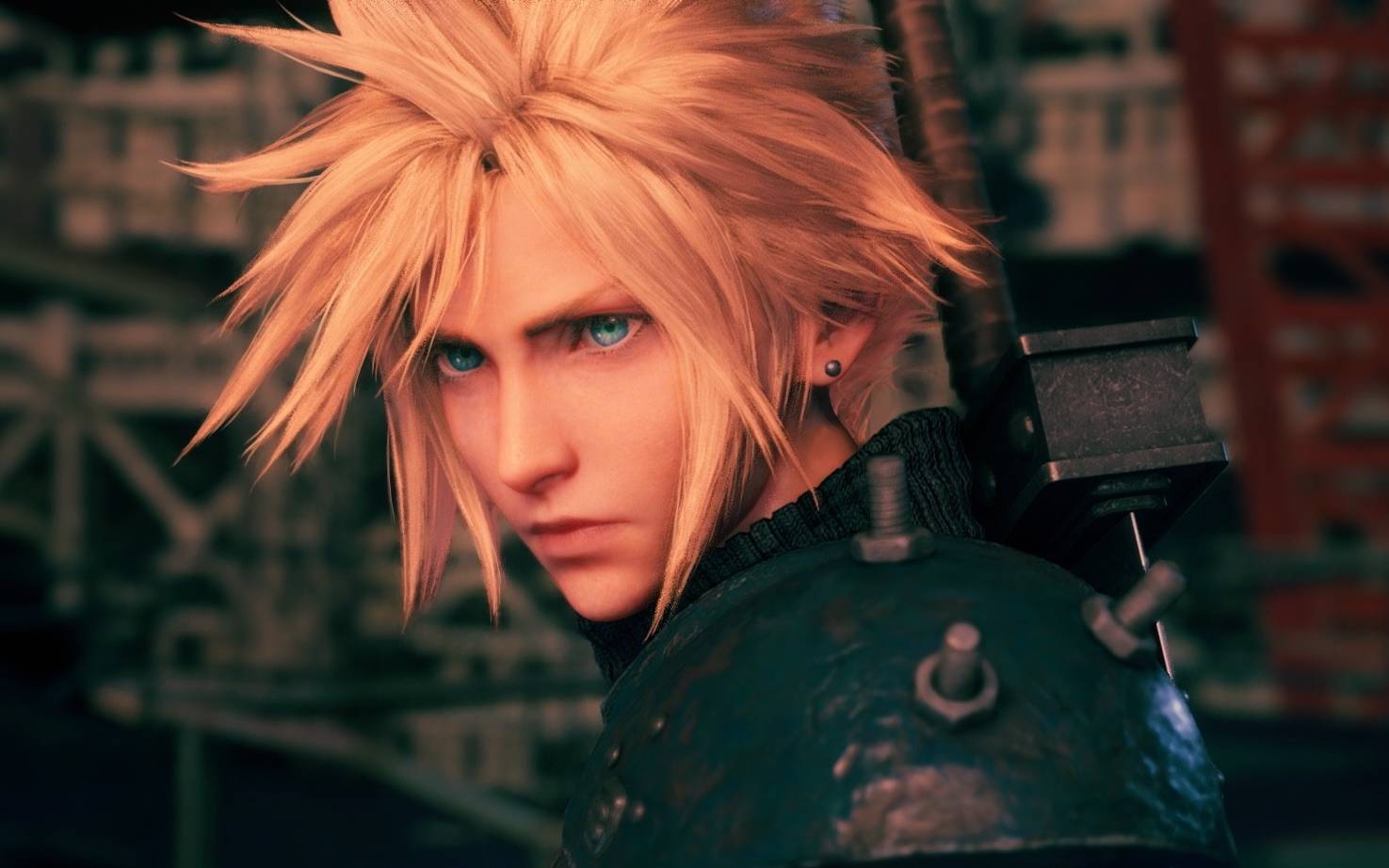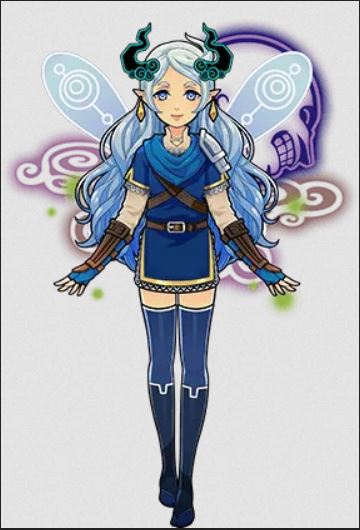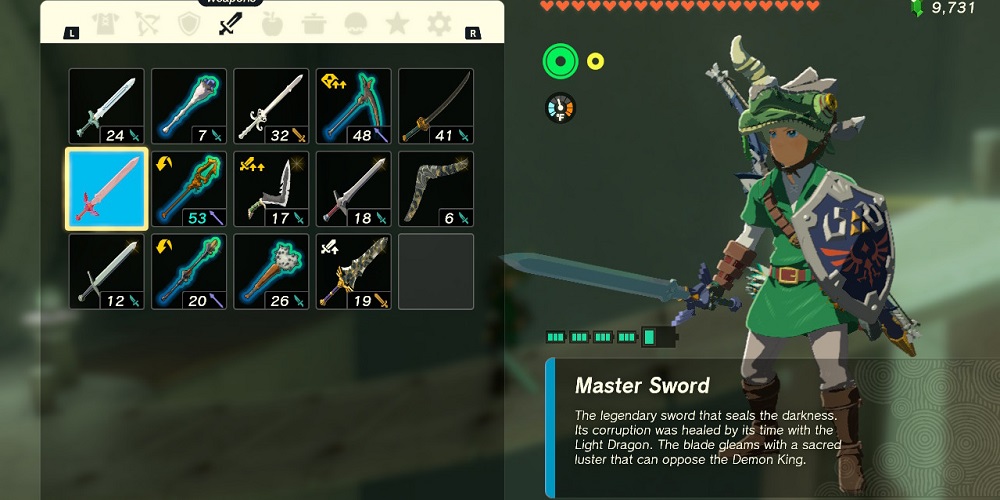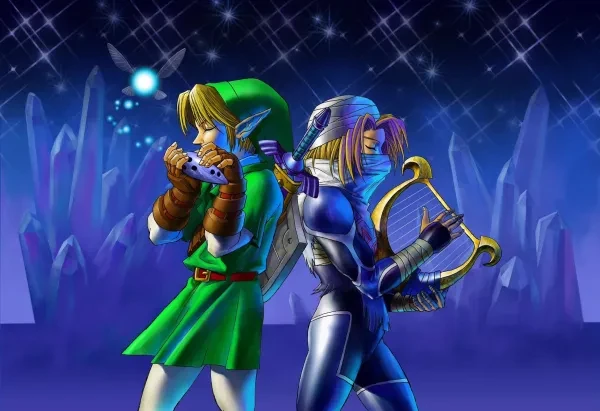
Each song in Ocarina of Time is memorable, thanks to the game’s legendary composer, Koji Kondo. The game itself is filled with deep Hyrulean lore, including the music. Every song on this list obtains some extent of either Hyrule’s history or character background. Most of the songs in the game are required. There’s a total of twelve ocarina songs Link learns throughout the game, half of them are warp songs. Here’s a list of the ten best songs in Ocarina of Time!
10. Requiem of Spirit
Link learns the Requiem of Spirit
The Requiem of Spirit is the sixth and last warp song that Link learns as an adult, taught to him by Sheik in front of the Spirit Temple in Desert Colossus. Before learning the song, Link perils through the Haunted Wasteland, but soon realizes he can’t persist through the Temple just yet, and that he’ll need to “travel back through time’s flow”.
In Sheik’s words, The Requiem of Spirit is a melody that will lead a child back to the desert. Insinuating that Link will need to use the pedestal of time and revisit the Temple as his younger self.
However, regardless of his age, Link can revisit the Temple anytime he likes by playing this song. Like every Ocarina song, it matches the environment and as well as the lore of the area itself. The word “Requiem” is a musical composition for the dead, usually in a celebratory context.
The song is played using the following C and A buttons: A v A > v A. The song reappears in Majora’s Mask as an easter egg to get rupees, and again in Twilight Princess through one of the Howling Stones. The song itself was written in D Minor, which explains the Requiem of Spirit’s melancholy sound.
Why Requiem of Spirit is Great
- You get to meet Nabooru, who hits on you
- You don’t have to endure the Haunted Wasteland again
- The Temple it’s for is super cool (it’s my personal favorite)
- It’s sad sounding but resonates in your ears for how beautiful it is
9. Prelude of Light
Link learns the Prelude of Light
The Prelude of Light is the second warp song Link learns after completing the Forest Temple, taught to him by Sheik. The sole purpose of this song is to warp back to the Temple of Time so Link can easily come back to the Pedestal of Time.
Like every warp song, they make traversing easier, even if you’re not trying to get to the song’s corresponding Temple. For example, playing the Prelude of Light has been a Godsend when I want to quickly get to Castletown.
The Temple of Time looks like a church, and the song itself in the first four bars gives a “mass” feeling, due to only using I and IV chords. This technique is typically used in church settings, such as in songs like “Plagal Cadence”. It was also written in D Major.
Most warp songs are to help the player get to a specific Temple to complete it. However, the Temple of Time is the only temple in the game that doesn’t have a dungeon layout, a boss, and all that jazz.
The song reappears in Majora’s Mask as an easter egg to obtain rupees, in Twilight Princess through one of the Howling Stones, and in Hyrule Warriors played by Sheik. It’s played using the following C buttons: ^ > ^ > < ^.
Why the Prelude of Light is Great
- Easier to traverse to areas surrounding Hyrule Castle
- You can get to the Pedestal of Time faster, rather than using Epona or running
- It’s a happy sounding song
8. Sun's Song
Link finds the Sun's Song
The Sun’s Song was created by the Composer Brothers, Sharp and Flat. The Composer Brothers worked with the Royal Family to study supernatural occurrences within the family. The Sun’s Song is a direct result of the brother’s studies in two different songs; one to summon the sun and the other to summon the moon.
Link learns this song by entering the Royal Family’s Tomb in the Kakariko Graveyard. The song’s notes are engraved on a wall in the crypt.
The following quote is scratched into the wall beside the notes; “The rising sun will eventually set, a newborn’s life will fade. From sun to moon, moon to sun… Give Peaceful rest to the living dead. Restless souls wander where they don’t belong, bring them calm with the Sun’s Song”.
The most notable power the Sun’s Song holds is the power to change day to night or vice versa when played. Link can freeze Redeads or Gibdos by playing the song, this prevents them from using their glares to stun you first. Lastly, when Link plays the Sun’s Song at certain points where Navi turns green on the ground, a special fairy will appear to refill his magic meter.
Changing the time of day instantly is convenient throughout the game; some places are only open during the day, some characters are only available at night, and so on. Using the song to stun Redeads and Gibdos come in handy in the bottom of the well, the shadow temple, different tombs, and so on.
The notes of the song are briefly played in the game when the sun rises as an intro to the overworld theme in the game. This reoccurs in Majora’s Mask, Twilight Princess, and Wind Waker. You can play the song with the following C buttons: > v ^ > v ^.
Even though the song is very short and not nearly as complex or appealing as the other songs in the game, the power it grants to the player made it to this list. Not to mention, its introduction in the overworld theme makes it memorable.
Why the Sun’s Song is Great
- Conveniently change night to day or day to night
- Stun freeze Gibdos and ReDeads for about 30 seconds
- Make time go by faster for side quests
7. Serenade of Water
Link learns the serenade of water
The Serenade of Water is a warp song Link learns from Sheik after acquiring the iron boots in the Ice Cavern, a mini-dungeon. The song warps Link to Lake Hylia so he can easily get to the Water Temple. The song not only helps the player get to the Water Temple easily but also any surrounding area around Lake Hylia.
Like most of the warp songs in the game, the title matches the lore of the corresponding area/temple. A serenade is a calming melody characteristically used to romance a woman. In this case, it’s more so the opposite.
During the Water Temple, Link reunites with Princess Ruto. As children, Link unknowingly got engaged to her with the Zora’s Sapphire and completely forgot about it as an adult. When Princess Ruto calls herself his fiancé, his startled facial expression insinuates he had no desire to marry her in the first place.
Due to this, the Water Temple has some romantic undertones to its lore with saving Ruto and her people…Even though Link doesn’t share the same feelings.
The song is repeated in Majora’s Mask as an easter egg for Rupees, and again in Twilight Princess whenever Link encounters the ghost of Queen Rutela of the Zoras. The song is played using the following A and C buttons: A v > > < ^.
The song was written in the key D Dorian. Naturally, it sounds very romantic, calming, and relaxing.
Even though the song is very short and not nearly as complex or appealing as the other songs in the game, the power it grants to the player made it to this list. Not to mention, its introduction in the overworld theme makes it memorable.
Why the Serenade of Water is Great
- Warps you to Lake Hylia
- Sounds beautiful
- The warp spot is very close to the Water Temple itself
6. Nocturne of Shadow
Link learns the Nocturne of Shadow
The Nocturne of Shadow is a warp song taught to Link by Sheik in Kakariko Village after saving her life near the well when the village is ravaged. Link must complete the Fire and Water Temple to start this cutscene.
The song allows Link to warp to the Graveyard where the Shadow Temple is located. Unlike any other warp song, this is the only warp song that Link absolutely must learn to physically reach a temple. In other words, every other temple is tangible even without playing their corresponding warp songs, except Shadow.
Hyrule’s dark and bloody history is drenched throughout the Shadow Temple. As a child, Link ventures to the Bottom of the Well, which is reminiscent of the Shadow Temple’s dark themes.
The Nocturne of Shadow’s sound reflects Hyrule’s grisly past very well. A Nocturne is a work of art that revolves around death or nighttime; in this case, it fits perfectly. The Shadow Temple itself is extremely dark (literally and figuratively) and is subsequently the source of a lot of gamers’ traumas (thanks, Dead Hand).
The song reappears in Majora’s Mask as an easter egg to obtain rupees, and again in non-canon media such as Hyrule Warriors played by Sheik. In music-nerd terms, the song is technically a prelude; as it starts on sad lowly notes, it progresses and builds into a more victorious tone. You can play the song using the following A and C buttons: < > > A < > v.
Why the Nocturne of Shadow is Great
- Sounds cool, kind of sad, but still cool
- You can easily get to Kakariko Village or the Graveyard
- The spawn point is steps away from the entrance of the Shadow Temple
- The song itself has cool lore in terms of Hyrule’s history
5. Song of Time
Link learns the Song of Time
The Song of Time is a relevant melody throughout the series, but its relevancy remains most prominent in Ocarina of Time and Majora’s Mask. Link learns the song from Zelda after he acquires the Ocarina of Time Zelda threw like a football into the castle moat.
The song is a sacred, holy-sounding tune with an in-depth history in the Royal Family. Like Zelda’s Lullaby, the song is taught to a very narrow select few.
The song’s main purpose is to open the Door of Time so Link can obtain the legendary Master Sword. Kind of like the Sun’s Song, the Song of Time has different functions.
With the song, Link can move “Time Blocks”, which have a distinct symbol on them known as the Symbol of Time. These blocks are usually in dungeons or temples and guard certain places Link will need to get to. Playing the song will move the block(s) out of the way so he can get to his destination or obtain items.
On top of that, the song is the theme for the Temple of Time. However, the song sounds different from its church sound; it's sung-through tongues with a lot of echoes.
The song is just as (or more) important in Majora’s Mask where Link has to play it to repeat the three-day cycle, so the moon doesn’t crush Termina. Moving Time Blocks is also a thing in Majora’s Mask. Link can also play different versions of the Song of Time (“Song of Double Time” and “Inverted Song of Time) to manipulate the flow of time itself.
The song is repeated in Twilight Princess and Breath of the Wild as the theme for the Temple of Time. It’s reoccurring in non-canon media such as Hyrule Warriors and the Smash series. The song is played using the following A and C buttons: > A v > A v.
The song was written in Dorian mode. The religious undertones of the song reflect its sound as well.
Why the Song of Time is Great
- Has a lot of meaning lore-wise
- Is re-used in high relevancy in Majora’s Mask
- Opens the Door of Time
- You can move Time Blocks with it
4. Song of Storms
Link learns the Song of Storms
The Song of Storms is a big fan-favorite among the Zelda fanbase with its catchy melody. Adult Link learns the song from the Phonogram Man, an angry, bitter guy who plays a phonogram in the Kakariko Windmill.
The Phonogram Man tells Link: “Back then a mean kid came here and played a strange song. It messed up this windmill!”. Using context clues, we can decipher through the dialogue that the “mean kid” in question was Link those years ago.
The notes themselves are short, however, when fully played out, they merge into a delightfully catchy song that I could listen to for hours. Like a lot of the other songs on this list, the Song of Storms isn’t just a song but has cool and epic powers.
When Link plays this song, he summons rain and storms, exposes hidden locations, and waters magic beans to quickly sprout for fairies. In certain locations around Hyrule, playing the song when Navi turns green can summon wingless fairies that restore both his magic meter and his health.
In terms of the song’s lore and deeper functions, the song is initially and mainly used to drain the Kakariko Well and cause the windmill to spin wildly. Draining the Well allows Link to venture into the required mini-dungeon, “The Bottom of the Well”.
The song primarily (unless played by the ocarina) uses an organ for its melody, along with a glockenspiel. Harmonically, the song is set in D Dorian along with some slight use of B-flat Major.
The song has gotten more attention over the years for Link’s experience of the bootstrap paradox. A bootstrap paradox is a causal loop in time travel – this is relevant in backward time travel that is normally used in Ocarina of Time when Adult Link goes back as a child for different quests or dungeons.
The song is repeated in Majora’s Mask as a mainline song taught to Link by the Composer Brothers in Ikana Canyon when Link revives the Ikana River, and once again in Oracle of Seasons as a theme song where the windmill is located. You can play the song using the following A and C buttons: A v ^ A V ^.
Why the Song of Storms is Great
- Catchy
- You can summon rain with it
- Is used to get to the Bottom of the Well
3. Saria's Song
Link learns Saria's Song
Saria’s Song is taught to Link by Saria when he visits her in the Sacred Forest Meadow. The scene itself is heartwarming, and Saria tells Link that the song will reconnect them. And it does; playing the song will allow Link to telepathically speak to Saria and they’ll have a full conversation.
Doing this also aids the player in where to go next. For example, Saria in her dialogue may hint at where Link needs to go next on his quest while speaking to her throughout the song.
The song resonates throughout the Zelda series and is one of the most memorable. The song is used for a plethora of reasons.
The song is required throughout the game to enter specific areas. Link plays the song for Darunia, leader of the Gorons to cheer him up. In doing so, Darunia gives Link the Goron’s Bracelet so he can proceed to Dodongo’s Cavern.
The last required use of the song is when Link is an adult. He’ll need to play it for Mido who is guarding access into one of the areas in the Lost Woods. In doing so, Mido will let Link pass through after reminiscing about simpler days when Saria was around.
Link can play the song to Skull Kid, a distinct character in the series. In return, Link gains Skull Kid’s trust, and by playing a little song game together, Skull Kid gives Link a Piece of Heart.
Saria’s Song is also the theme of the Lost Woods. It's (very) catchy melody has inspired fans to generate covers and remixes of the song, like the Song of Storms.
The song reappears in Majora’s Mask in the Woods of Mystery, when Pierre dances, and during a cutscene where Skull Kid is with Tatl and Tael. It’s also in Twilight Princess as a remix in the Sacred Grove, and Skull Kid will play it on his horn. And lastly, it’s in Tri Force Heroes as a melody the Lucky Lobby Ball plays when it's hit with a sword.
Harmonically, it’s in C Major, and the modal basis of the song creates a medieval-sounding piece. It's catchy, and sweet, and if you’re like me, you can listen to it for hours. You can play the song using the following C buttons: v > < v > <.
Why Saria’s Song is Great
- Super catchy
- You can talk to your childhood bestie anytime (even when Link is an adult)
- Goron’s love Saria’s song
2. Zelda's Lullaby
Link learns Zelda's Lullaby
Zelda’s Lullaby is the most important song in the game and probably in the whole series. Not only it's meaning but how it helps Link throughout his quest. The song is taught to Link by Impa after he meets Princess Zelda for the first time in the castle courtyard.
Before teaching him the melody, Impa tells Link: “This is an ancient melody passed down by the Royal Family. I have played this song for Princess Zelda as a lullaby ever since she was a baby. There is a mysterious power in these notes”.
Impa was certainly telling the truth because Link will need Zelda’s Lullaby for required questlines throughout the entire game. Link will use the melody to alter water levels in the Water Temple, entering specific locations throughout the game, opening hidden passages, opening the Royal Family’s Tomb, and so on.
Throughout the game, the telltale sign that Zelda’s Lullaby needs to be played is if an engraved Triforce is on the ground somewhere. Playing the song will help Link in his mission.
On top of all the cool things it gives you, Link is a special guy. Not just because Link is awesome, but he’s trusted by the Royal Family. According to Impa and other characters throughout the game, Zelda’s Lullaby is a song that only the Royal Family is allowed to learn.
The song’s powers go beyond what Link does. In fact, at the end of the game, Zelda plays the song to send Link back in time. So, it doesn’t have core functions as all the other songs have.
Even though a lot of the ocarina songs in Ocarina of Time had their start in the series through this game, Zelda’s Lullaby was first played in A Link to the Past when Link meets Zelda for the first time and every time he rescues one of the seven maidens.
After Ocarina of Time, the song is repeated in Majora’s Mask, The Wind Waker, Four Swords Adventures, The Minish Cap, Twilight Princess, Phantom Hourglass, Spirit Tracks, Skyward Sword, A Link Between Worlds, Tri Force Heroes, and Breath of the Wild (phew, I’m out of breath just typing all the different games). Zelda’s Lullaby is a very prominent song in the Zelda universe. Moreover, the song is usually played during the end credits of a lot of the games.
In terms of its sound, it’s an angelic and alluring melody that can make a grown man cry. It was written in G major and E minor. The song can be played using the following C buttons: < ^ > < ^ >.
Why Zelda’s Lullaby is Great
- A very important song in the game and the Zelda series
- Can uncover all kinds of secret locations
- Helps Link in his quest
- Sounds beautiful
1. Epona's Song
Link learns Epona's Song
Lastly, we have Epona’s Song! This song is taught to you by Malon in Lon Lon Ranch to lure her horse, Epona to you. It's always sung by Malon who tells you that her mother originally came up with the song.
Little do they both of you know, Epona will eventually become Link’s trusty horse when he’s an adult. When Link is a child, the song can only lure Epona to him on the Ranch. However, as an adult, Link can be practically anywhere (except for temples and dungeons) to beck her to come to him.
The song comes in handy when the player needs to get to points A to B in a certain amount of time or simply traverse Hyrule faster. There’s no point throughout the game where Epona doesn’t listen to you, so the song always works. The only times it doesn’t is because Epona might’ve clipped into a wall or got stuck trying to come to you.
Whenever Link visits Lon Lon Ranch, Malon can be seen in the center of the ranch singing the song either as a child or as an adult. If Link plays Epona’s Song to any cow in Hyrule, they’ll produce milk that Link can use to replenish hearts (if he has an Empty Bottle). The song itself has a beautiful sounding melody, and it is my personal favorite, so I’m a little biased putting it here like number 1.
However, a lot of fans carry the same sentiment as I do about how lovely this song is. Not to mention, Epona is a special girl and anything relating to her should be cherished.
The song reappears in Majora’s Mask whenever Link needs Epona, in Minish Cap as a cameo, In Twilight Princess it’s rearranged to “Ilia’s Theme” and played at certain points when Epona is relevant, and lastly in Breath of the Wild when Kass is in the stable.
Epona’s Song was written in C Major and has an almost “twangy” feeling. It’s also a nice song to sing to, I can second this from personal experience. The song can be played using the following C buttons: ^ < > ^ < >.
Why Epona’s Song is Great
- Easily call Epona to you
- It sounds lovely
- Free milk
You may also like:
[Top 15] Best Studio Ghibli Soundtracks
Video Games Live: 5 Reasons Why You Should Attend The World’s Greatest Video Game Music Concert
Best Gaming Music to Listen to While You Play
